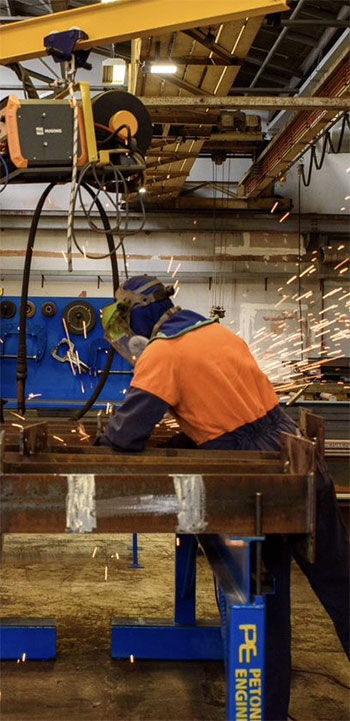Key challenges
As we’ve worked to understand our region’s workforce and skills environment, we’ve heard from Iwi, employers, local government, central government, industry groups, training providers, workers, unions, communities, learners and job seekers. The themes of our workforce opportunities and challenges have been generally clear and consistent. This section looks at what’s underneath the stories told in the first half of this plan.
On this page
Challenges impacting employers
Firms from all sectors are experiencing significant skills shortages across all levels of skills. This is true for both our region and across Aotearoa New Zealand. Understanding why can help us identify what isn’t working well in our labour market and figure out the most useful actions we could take to get it working better for everyone.
 One reason for businesses finding it hard to get staff for some occupations is that there is an “absolute” shortage of people with the required skills and experience. A few reasons for this include:
One reason for businesses finding it hard to get staff for some occupations is that there is an “absolute” shortage of people with the required skills and experience. A few reasons for this include:
- Training (volume or type) is not meeting the needs of employers, e.g., because of lack of clarity on what’s really needed; poor communication between employers and the education system/ education providers about what’s required; lack of flexibility in the education system; not enough effective “bridging” between education and employment
- Skills mismatches, where employers are looking for workplace experience, and soft skills as well as technical ones which are not readily available in the labour market
- Limits on the number of people training for specific skills due to demand or imposed limitations
- People being unaware of opportunities in an occupation or sector
- No mapped career pathways, or clear qualification frameworks and structures. This limits progression through unskilled to semi-skilled to highly skilled work and has led to a high reliance on immigration in some areas
- The capacity of, and commitment by, businesses to train and mentor new entrants
- Insufficient domestic supply of workers or over-reliance on a migrant workforce, combined with limitations on access to migrant workers
Other reasons why industries and individual firms struggle to find workers involve issues around the attractiveness of regions, sectors, industries, occupations, specific firms or individual jobs, or other recruitment issues. Issues of this kind can include:
- Poor reputation, negative perceptions and misconceptions about industries, types of jobs or particular firms
- Low wages and poor general working conditions, including around health and safety and work culture
- Job structuring, such as not offering school hours or flexible work more generally
- Limited hours; unattractive work design e.g., around shifts
- Employers not knowing where to look for workers or looking in limited areas or within limited pools of people, exacerbated by a reliance on traditional ways of recruiting staff
- Employers being unaware of how to provide a working environment that will suit a diverse range of workers, or workers with particular needs
- Availability of housing, transport, schools, childcare, suitable work for other family members
Employers’ internal business policies and practices will also affect their ability to make the most of the existing workforce, for example around:
- Work and job design
- Training and development; coaching and mentoring; upskilling and re-skilling
- Projecting future workforce needs
- Career progression and succession planning
- Retention
Challenges impacting job seekers
- It can be harder for disabled people, Pacific peoples and Māori to get into the workforce, and once they are there, it can also be harder for them to progress to better, and better-paid jobs. The same is true for women.
- There is a persistent number of young people not in work, education or training, and Māori, Pacific peoples, and disabled people are disproportionately represented in this group.
- Job seekers and learners often don’t know about the jobs out there, how to prepare for them, or where to start. There’s a lack of comprehensive joined-up and accessible careers information, advice and guidance which limits people’s ability to upskill, reskill and progress in work.
- It can be hard for many people to successfully make the transition to paid work from education or being out of the workforce. Amongst many other factors this may be because they lack knowledge about rights and obligations in the workplace, e.g., minimum employment standards and what it is reasonable to expect (or legally required) from an employer, including with respect to healthy and safe working conditions. Some people may also need mentoring, pastoral care or support to advocate for themselves.
- In some regions, particularly Ōtaki and Wairarapa, there is no public transport. In other areas it is very limited. Combined with challenges that many people have in getting drivers’ licenses, this means access to education, training and employment is severely limited in these areas.
- Related to some of the above points is the fact that, outside of the public sector, we have low levels of unionisation.
Challenges across the labour market
- There’s a lack of connection between key actors and stakeholders. This connection is crucial and includes connection between schools, tertiary institutions, and employers; between community groups and employers; and central and local government; and is directly related to many of challenges already listed above.
- COVID-19 is affecting supply chains, business sustainability (especially small businesses and the self-employed), access to skills, and job security. It is also putting pressure on or shifting business models for some firms as they adapt to the challenges of the environment. These different ways of doing business (e.g. retailing online and operating remotely) can in turn impact on the workforce required.
< Where will we find our future workforce? | A note on data >

